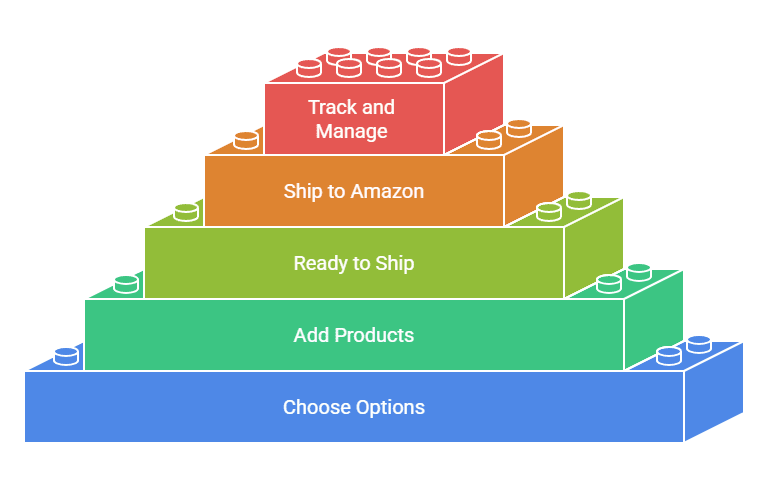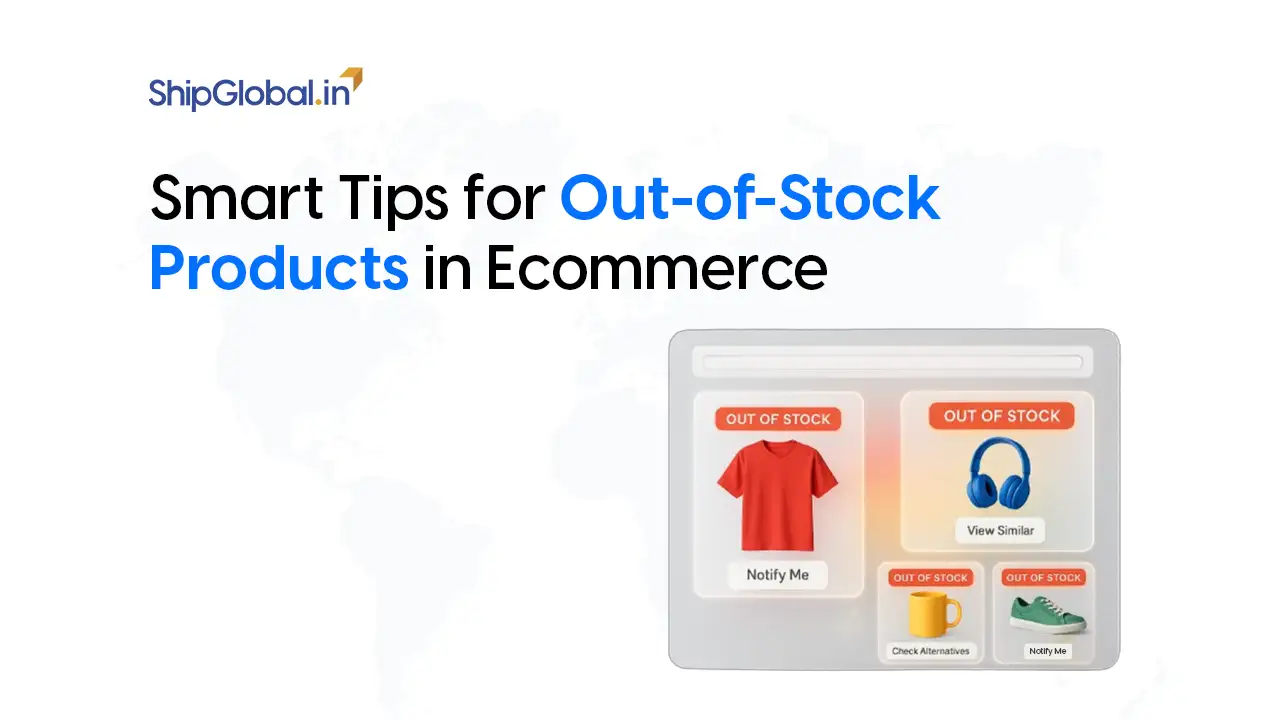Are you an entrepreneur running a small or medium-sized business in India looking to expand your reach internationally? Or are you an established manufacturer or wholesaler exporting goods globally? With Amazon FBA, you can use Amazon’s massive global Fulfillment network and reach your customers without the hassle of managing shipping, allowing you to focus on sourcing great products and growing your brand.
When you first learn about selling on Amazon, you’ll encounter many acronyms. Perhaps the most common Amazon acronym is FBA, which stands for Fulfillment by Amazon—the unique fulfillment method Amazon provides to the sellers. Instead of storing, handling, and shipping all your orders yourself, Amazon takes care of it for the seller, but this service has a fee. Shipping with FBA costs 30% less per unit than standard shipping options offered by major carriers and 70% less per unit than comparable FBA premium options.
Whether you’re an experienced Amazon FBA seller or just starting, this comprehensive guide is tailored to meet your all needs. From understanding the fundamentals to optimizing your FBA services, we’ve got all the insights to the success of your business. So, without wasting time, let’s start.
What is Amazon FBA
Fulfillment by Amazon (FBA) is a service that allows you to appoint Amazon to process your orders. Through FBA, you can also store your products in Amazon’s extensive network of fulfillment centers. Moreover, you can provide your customers convenient shipping options, from free two-days shipping for Prime members to free shipping for all.
Amazon takes care of everything from selecting the items to packing, shipping, managing and handling returns. The Amazon FBA program effectively reduces costs, boosts sales, and gives you more time to concentrate on growing your business.
FBA is a component of Amazon’s comprehensive automated services, which Amazon calls the supply chain. Also, Amazon offers an extension of FBA, which is known as Multi-Channel Fulfillment or MCF. Through MCF you can delegate order fulfilment for purchases made on your website or any other sales channel.
Also Read- Streamlining Payments for Indian Sellers on Platforms like Amazon
How Does Amazon FBA Work
Let us look at how a seller can use Amazon FBA to meet their business goals.

Choose the FBA Delivery Options
First, the seller must choose from the different FBA delivery options provided. You can decide how you want FBA to handle your products, as a whole or only some of them. Moreover, FBA can help fulfil your multi-channel orders.
Add Products to FBA
Once you decide what products to send to the FBA center, it’s time to enroll your products from your seller account. Double-check the products you have ordered with dimensions to avoid last-minute issues.
Ready to Ship your First Order
Suppose you have chosen to keep the products at your warehouse, and then it’s time to pack your first order. Start by labeling and packaging the product adequately to ensure products get transported safely and securely.
Ship Products to Amazon
Once your product is labelled and packed, it’s time to ship it to the Amazon fulfillment network. The staff at the fulfillment center will guide sellers’ step by step through the shipment workflow.
Track and Manage
Tracking your products and managing your inventory with FBA is accessible and helpful. You can start and scale your business efficiently with the help of the FBA dashboard. A seller needs to monitor their inventory to avoid long-term storage costs.
How to become an Amazon FBA seller
Becoming an Amazon FBA seller involves the following steps:
- Start by signing up for an Amazon selling account and choosing the plan as per requirement.
- Enroll your selling account with FBA.
- Now you can create new listings for your FBA account and convert your existing listings to FBA.
Whereas to Register for FBA, you have to follow the below-given steps:
- First, the user needs to navigate to the seller’s central account.
- Now click on the gear icon and select the account info option.
- On the seller account information page, click on manage.
- Choose the option to register with FBA and follow the steps displayed on the screen.
The user must meet all the requirements outlined in the terms and conditions section of the Amazon FBA page. Moreover, a few other specific requirements for adding inventory in FBA are suggested.
Also Read- A Guide to Starting Your International E-Commerce Venture from India
Amazon FBA Calculator
Gaining insights into your business expenses and their influence on your earnings is crucial to choosing the right fulfillment strategy. And, being an Amazon FBA seller, you can leverage the Amazon FBA calculator to gain insights into the potential profitability of each item and sale. This can help you to compare the projected costs and profits between FBA and your in-house fulfillment approach.
Exploring Amazon FBA Options and Free Trial Opportunities
Amazon offers several FBA options that cater to different business models and product categories. Whether you’re a private label brand, a reseller, or a dropshipper, you can tailor your FBA setup to match your needs. In some regions, Amazon may offer an Amazon FBA free trial, where new sellers get a limited number of units shipped for free or enjoy waived storage fees for a specific period. These promotional offers are ideal for testing the waters without a large upfront investment.
International Shipping with Amazon: FBA and Global Logistics
If you’re targeting customers outside your domestic market, Fulfilled by Amazon international shipping becomes critical. Amazon enables global sellers to reach customers across the world using Amazon global logistics, a network of freight, customs, and fulfillment solutions designed to simplify cross-border trade. But sellers often wonder: Does Amazon FBA ship internationally? The answer is yes—with programs like FBA Export and Amazon Global Selling, you can ship your products internationally while Amazon manages most of the complexities.
Amazon FBA Shipping: Simplified Logistics for Sellers
One of the biggest advantages of using FBA is the streamlined Amazon FBA shipping process. Once your products are sent to an Amazon fulfillment center, they become eligible for Prime delivery, faster shipping, and customer trust. Amazon’s logistics system handles both domestic and international delivery with real-time tracking, reducing the seller’s operational load. This reliability and reach are what make FBA a top choice for eCommerce businesses scaling beyond their local markets.
Amazon FBA Benefits
| Benefit | Description | ||||||||||
|---|---|---|---|---|---|---|---|---|---|---|---|
| Cost Efficient | FBA shipping costs are typically 30% lower per unit than standard shipping options from major US carriers and 70% lower than premium FBA alternatives. | ||||||||||
| Expand Your Fulfilment Across Channels | With Amazon FBA’s multichannel fulfillment options, you can broaden your market to other platforms like eBay. By using Amazon’s vast shipping network for order fulfillment, you can get major benefits from streamlined operations, cost savings, and quicker shipping for customers regardless of where they purchase. | ||||||||||
| Boosts Sales | FBA offers two days of dependable shipping, which can significantly increase your visibility and sales on Amazon. Other programs like FBA Subscribe and Save foster repeat sales by providing customers with scheduled deliveries of essential items. | ||||||||||
| Saves Time | F
Amazon FBA DisadvantagesSince no two people are alike, it’s critical to consider why FBA services might not be the best fit for your requirements. The following are some points to consider:
Also Read- Top 10 Reliable International Courier Services from India in 2024 Final WordsIn conclusion, Amazon FBA can be a powerful tool for businesses of all sizes looking to expand their reach and increase sales. It offers several advantages, including access to Amazon’s vast fulfillment network, improved product ranking, and trusted customer service. However, weighing the pros and cons carefully before deciding whether FBA is the right fit for your business is essential. Potential drawbacks include the fixed fees associated with FBA, the challenge of managing inventory, and the specific product preparation requirements. If you’re considering using FBA, be sure to research and understand the costs involved before deciding.  Regional Offices: Delhi | Jaipur | Bhopal | Surat | Ahmedabad | Chennai | Agra | Moradabad | Mumbai | Kanpur | Lucknow | Udaipur | Meerut | Roorkee | Jalandhar | Ludhiana Contact

©2025 Ship Global Express Private Limited | All Rights Reserved |






